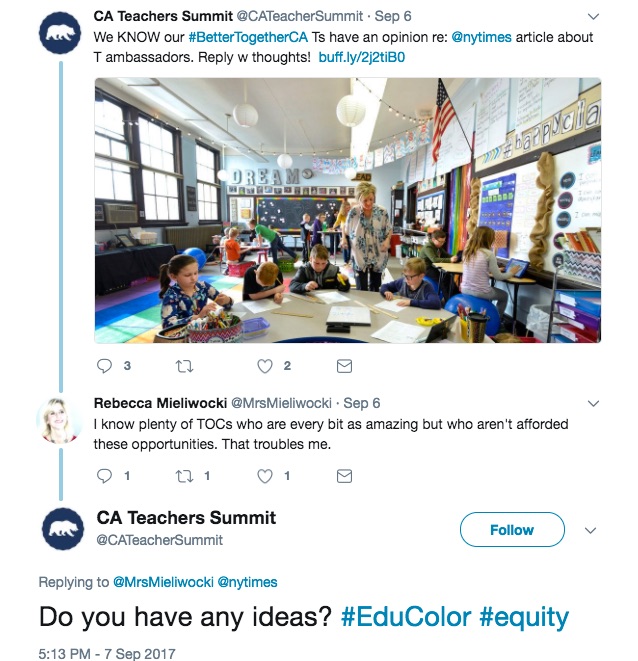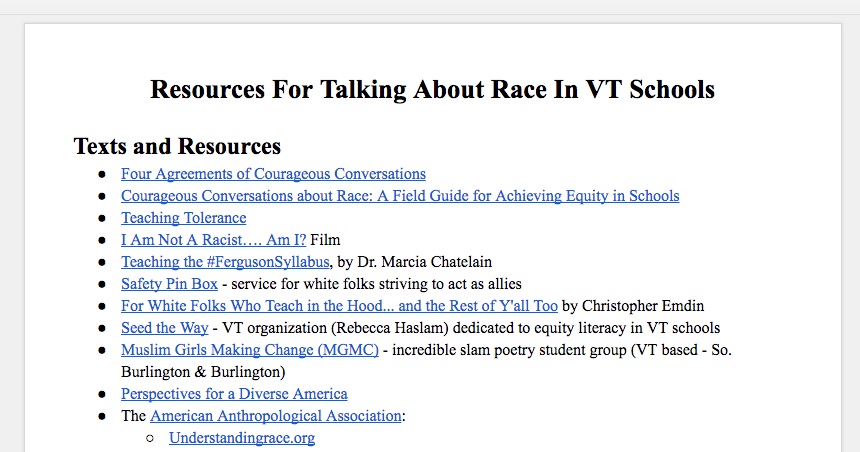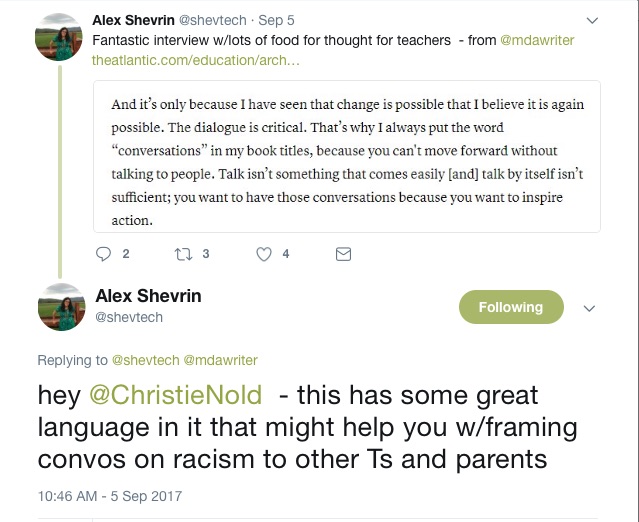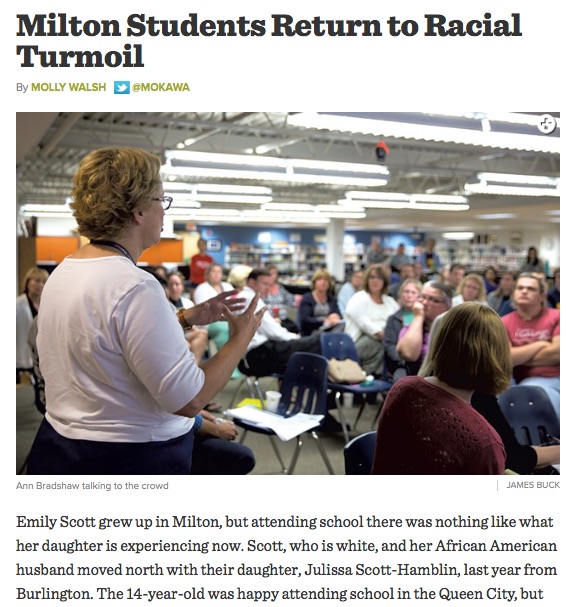Conversations begin at home. And at the bus stop. Also the market. And–
 So much of the change we need to see right now can be kicked off by starting conversations with members of your community.
So much of the change we need to see right now can be kicked off by starting conversations with members of your community.
It takes a certain amount of courage to address issues that affect your whole community — such as bullying, hate speech and equity — with people who you may never have spoken with before.
But it’s effective. And the more you do it, the easier it gets. Let’s look at 4 ways to start a difficult conversation in your community.
4 ways to start a difficult conversation
1. Make community dialogues a part of your back-to-school night
Washington West Supervisory Union screened the movie Most Likely to Succeed, and used the screening to kick off a series of conversations about what their full community liked and didn’t like about their schools. More than 100 students, educators, parents and community members attended the screening and stayed for the discussion. They then returned for additional discussion evenings.
Our own Life LeGeros took part in the conversations, both as a professional development coordinator and a parent. He interviewed some of the other participants to share the power of the evenings.
[soundcloud url=”https://api.soundcloud.com/tracks/293198132″ params=”color=#ff5500&auto_play=false&hide_related=false&show_comments=true&show_user=true&show_reposts=false” width=”100%” height=”166″ iframe=”true” /]
Most Likely to Succeed is immensely popular as a springboard for talking about the issues that affect schools across the country. Winooski School District, the Partnership for Change VT, the Vermont Curriculum Leaders Association and Burlington High School have all used it to kick off similar community conversations. Another popular movie night screening is Screenagers, which allows families to bring their concerns about the digital-real-world-life-balance to the table in a supportive setting.
Champlain Valley Union High School kicked off the school year with a screening of Resilience, followed by a panel discussion on the effects of childhood trauma on learning. The conversation was geared towards teachers and families, as part of the Champlain Valley Unified School District’s new efforts to adopt trauma-informed teaching.
2. Create learning opportunities that involve the community
As you and your students begin to construct a curriculum together, what are some learning opportunities where students can meet and talk to people in the community they might not otherwise be compelled to meet?
At The Cabot School, students interviewed members of their community who’d lived in different regions of the country to assemble a map that reflected the makeup of their Cabot, Vermont community. Along the way, they discovered some surprising commonalities with neighbors, as well as important differences.

3. Reach out to your PLN
You’re definitely not alone in trying to tackle these issues. Reach out to your PLN and ask how others are handling the conversations. Share what’s worked — and what hasn’t. Find other educators in your district or state with a local hashtag, or jump into a chat with content-specific hashtags such as #mathchat.
Or reach out to participants specifically strategizing around hard conversations. Check out #EduColor, for a start.
Vermont educators crowdsourced this Google Doc of resources for talking about race in Vermont schools partly through twitter, partly through in-person conversations:
Share resources to support your fellow educators wherever they are with their conversations.
4. Create activities that encourage the members of your community to share themselves

Two sixth graders at Crossett Brook Middle School produced this video in which the Crossett Brook community — students and teachers both — share one important fact about themselves. It’s a powerful activity that can help break down borders. Or just perceived borders.
That first step always takes courage.
Reach out to the members of your teaching team, and ask them how they’re tackling these topics.
Ask your kids how (or if) they’re having these conversations in schools. Ask your pastor. Be the one who reaches out and shares what you’re trying in your classroom.
Amplify the conversations, or conversation-starters you hear going on around you. Encourage others to engage with them, and with you.
Approach these conversations with courage and authenticity, and be okay that sometimes things will feel uncomfortable. Be okay with not knowing the answers right away. Be okay with being wrong sometimes.
But realize that these difficult conversations bring their own rewards. And they’re absolutely necessary.






